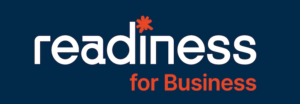By Christi Malthouse
If you were asked what an EAP is, would you know the answer? Is it just another workplace abbreviation to add to the list, or do those three little letters hold significant importance?
An EAP – Employee Assistance Program – is something everyone in the workplace should know about, but unless you’ve faced a particular challenge where the EAP and its reactive response benefits you, then chances are you may not have even heard about it. And that’s an issue.
What is an EAP?
An Employee Assistance Program traditionally focuses on providing reactive support to employees when they seek help individually for a range of issues including mental health, grief, workplace conflict, or financial or legal assistance.
If the employee identifies that they have a problem, they can contact the EAP provider directly or through their Human Resource department.
What are the benefits of an EAP?
In its conventional role, an EAP can support employees with personal or work-related problems by providing, for example, counselling services, while also delivering the business owner the benefit of reduced absenteeism and increased employee satisfaction.
“Providing confidential 24/7 wellbeing support to Whispir staff members globally is a critical engagement tool for the business. Knowing that professionals are available to support our employees in a confidential manner with difficult matters, is important to the business. Whispir has been particularly vocal during the lockdown period in reminding staff of the EAP support that is available. We recognise the strain that the last 6 months may have placed on the mental health of individuals and want to ensure the best support is made available,” says Daniel Cherin, Group People and Culture Manager of international communications firm, Whispir.
In the last decade as wellness and wellbeing has edged closer to the forefront of employers minds, fitness training has become part of the corporate wellbeing strategy, in addition to an EAP, to good effect.
But times have changed, again. Pre-COVID versus post-COVID.
How can an EAP work in a post-COVID world?
In a time of unprecedented stress and anxiety, it is becoming increasingly obvious that more needs to be done to support employee mental health and wellbeing regularly, and pre-emptively. Focus is shifting from reacting to a critical situation to creating a workplace culture and environment that promotes good mental health and emotional wellness, underpinning the basis of employee welfare.
And that means being proactive.
“Having the ability to pick up on potential wellbeing issues before they become too great is crucial to maintaining a healthy wellbeing. Ensuring employees have the skillset to manage uncomfortable emotions is even better,” says Readiness co-creator, Simon Kearney.
“Don’t underestimate the positive effect proactive behaviours can have on the people around you…colleagues, friends, family, and your impressionable kids!”
Just like the corporate fitness revolution, by reshaping the approach to workplace wellness strategies, and incorporating an EAP in conjunction with a mental health and wellbeing platform that monitors, identifies and educates employees on wellbeing issues before they reach crisis point, employers are essentially safeguarding their workers.
Says Cherin, “Being proactive, from my perspective, is about raising awareness of the program and the important role it can play. It is critical employees feel safe to engage with the service. It is important that staff understand it is a sign of ‘strength’ not ‘weakness’ that they are seeking help on matters such as this.”
To be proactive is to be a leader, to stay ahead of the pack. To be proactive in employee support, health and wellbeing, is to be a game changer for both employees and employer.
How does a proactive wellness program work?
Having worked at the elite level of sport in the Australian Football League, National Rugby League, National Basketball league, and Tennis Australia, Kearney long ago noticed a link between an athlete’s physical performance and their state of mind.
“I learnt very quickly in elite sport that an athlete can be 100% physically fit yet not be able to perform on game day due to their emotional state. The emotional health of the athlete is potentially even more important than their physical health and both strongly influence each other, ultimately effecting overall performance. It is no different in business, school and everyday life,” says Kearney.
As a wellness initiative that incorporates tracking tools and self-assessment surveys to monitor and check-in with employees regularly, Readiness gets ahead of problems becoming an issue. In other words, it provides early intervention. It is proactive, while also supplying help when it’s needed, plus education and resources to aid in long term health and wellbeing and behavioural changes.
To be proactive is to be a leader, to stay ahead of the pack. To be proactive in employee support, health and wellbeing, is to be a game changer for both employees and employer.
You can change the game today, with Readiness.

